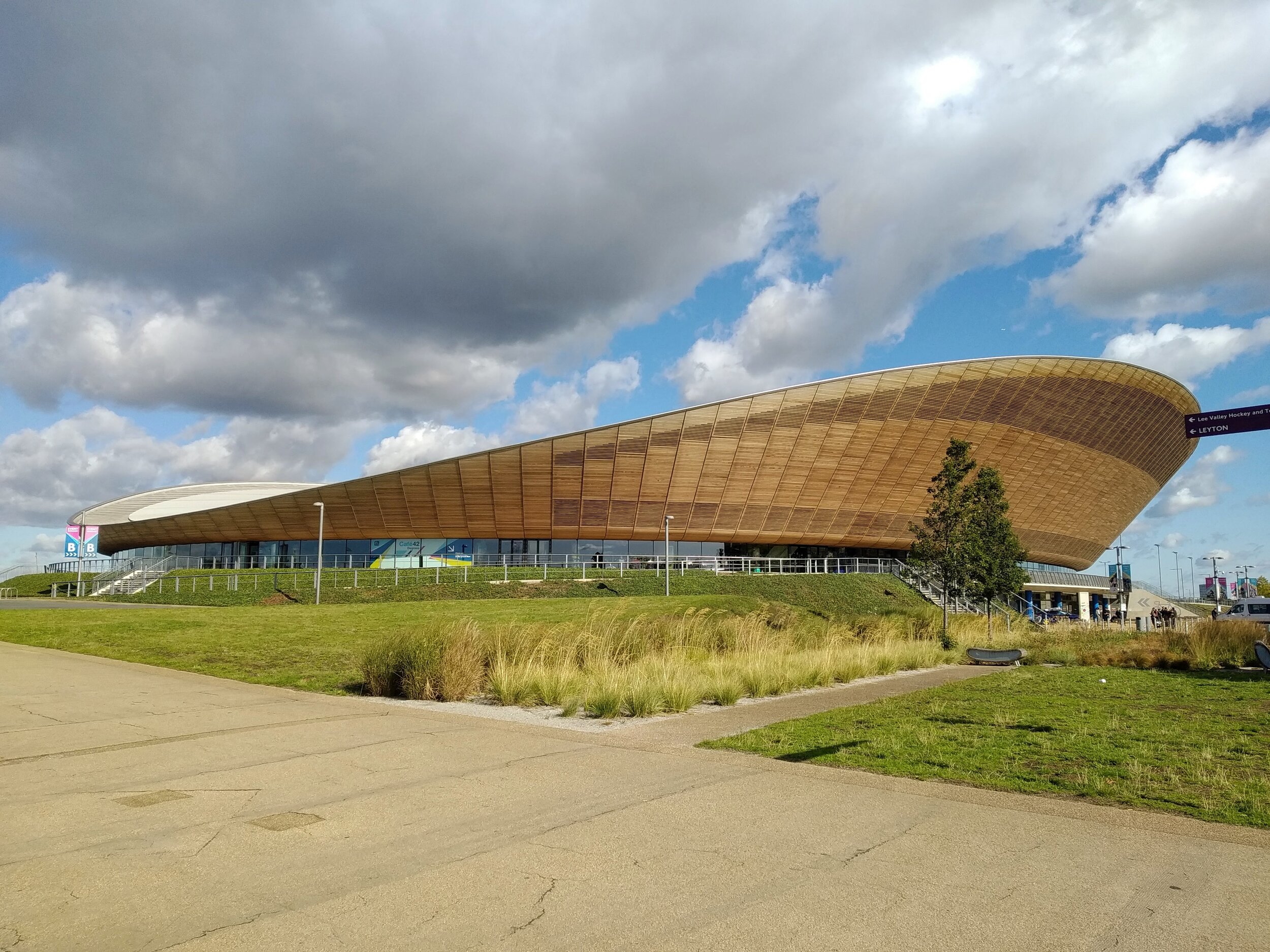How do you start a revolution...?
“How do you start a revolution?”
These were the bold words with which Graeme Smith, SVP of Oxbotica, launched a showcase event for the Driven project – a 30-month study that aimed to deliver SAE L4 driving on the streets of London and Oxford. Graeme was reflecting on a conversation he had with Oxbotica CTO and founder, Prof. Paul Newman several years ago. They knew Oxbotica had technology that could help deliver a revolution in safe automated driving but needed to demonstrate it in the real world – and thus the idea for the Driven project was born.
Graeme Smith, Oxbotica SVP, launching the Driven showcase event
In this Innovate UK supported project, Oxbotica leads a wide-ranging consortium (Oxbotica, Nominet, Axa XL, TRL, Oxfordshire County Council, Telefonica O2, RACE, Cicero, TfL and University of Oxford) and the showcase was being held at the Lee Valley VeloPark, part of London’s Olympic Park. This was a second trip there for me in as many months to experience a connected and automated vehicle and reinforced to me the original vision of the Smart Mobility Living Lab; that the Olympic Park (and the Royal Borough of Greenwich) should be an environment in which new mobility concepts can be safely trialled and developed to prove their effectiveness and to understand how they complement and augment existing travel modes.
Lee Valley VeloPark at the London Olympic Park site - part of the Smart Mobility Living Lab and host venue for the Driven showcase event
In a series of presentations on the project, Graeme described the self-driving car as the ‘bauble’ of the project – a shiny distraction that shouldn’t diminish a grander vision; to enhance all areas of life positively and sustainably through automation and robotics technologies.
This vision was painted engagingly by Paul. His ambition for Oxbotica stems from a concept for robotic technologies he envisaged whilst working in Sydney, Australia. This he summarised as “x → Ꝏ; t → Ꝏ”; creating systems that can work in any place at any time and with no reliance on external communication. Oxbotica’s mission for ‘Universal Autonomy’ has emerged directly from this vision. The systems that operate the Driven project cars (and a wide variety of other vehicles that Oxbotica are developing) are continuously asking “where am I, what’s around me, what should I do next?”.
Paul also described how the team have been working hard on delivering computing efficiency for their systems, stating that their autonomy stack works at 320W – about the same as a typical desktop computer. He also described how their system can identify and track the movements of as many as 150 vehicles per second – a critical capability in the bustling streets of Stratford.
Paul’s presentation was followed by Adrian Capland from insurance partner, Axa XL. XL Catlin have been long time investors in Oxbotica and their acquisition by Axa created the opportunity for Axa XL as the specialist insurance branch to participate in the Driven project. Their role is to determine how an insurer can improve its real-time assessment of driving risk, based on the perceptions of automated vehicles.
Finally, there was a presentation by Nominet. Whilst not necessarily a household name, Nominet can probably claim to have been present in the overwhelming majority of UK households since they are responsible for managing the ‘.uk’ web domains. On the Driven project, they are managing cybersecurity and data exchange and have created a high-level framework to provide assurance around the operation of the trial. Interestingly, they also gave brief insight into their work for the upcoming Endeavour project with Addison Lee, Oxbotica, DG Cities and Immense Simulations. This involves segmenting the UK road network into ten million blocks and identifying the safety threats within each block to deliver crowd-sourced real-time estimates of road risk.
Dedicated parking for the Driven AVs at the Lee Valley VeloPark!
The last of the showcase presentations was an (unintentionally?) amusing passenger instruction video, reminiscent of the comedy British Airways pre-flight instruction videos. This provided participants with basic background and safety information about how the test ride would operate. It also described the technology used to enable automation (two Bumblebee stereo cameras, two Blackfly cameras, one Velodyne VLS-128, two Velodyne VLP-16s, one front facing radar), some of the features of the route (traffic light controlled junctions, zebra crossings, speed bumps etc.) and the safety case work undertaken by TRL to support the trials.
After the video, attendees were organised into pairs to experience the test drive. Whilst we waited, and with team cyclists shouting encouragement to one another on the track below, giant screens in the VeloPark showed Oxbotica’s Caesium fleet management tool – tracking each of the vehicles and showing traffic light state as they progressed around the route.
Panoramic view of the velodrome
Inside our ride (a Ford Mondeo PHEV), we were greeted by a safety driver at the controls and a test operator monitoring readouts alongside. After a few more basic instructions, the dashboard mounted screen switched from ‘Autonomy available’ to ‘Autonomy enabled’ and, smoothly and steadily, we pulled away. It was helpful to have an additional screen in the rear of the vehicle that gave an indication of what the vehicle was ‘seeing’ as it progressed along the route. I noted two additional vents protruding through the rear parcel shelf. As we drove, these blew warm air into the passenger compartment from the boot to cool the autonomy computer hardware therein. Although power consumption may be relatively low, it was clear that thermal management was still an important area to address.
The safety assistant and in-vehicle display screen within the Driven vehicle (pictures and video were not permitted on the trial; this image is from the Driven project website)
The drive itself was remarkable in that it was unremarkable – and I think this was the aim. Whilst this was a relatively short test run (10 minutes), the actions of the vehicle were basically indistinguishable from those of a competent human driver. On a couple of occasions, circumstances conspired to require the safety driver to step in briefly. It was claimed that the intervention was a requirement of the safety case rather than through any concerns that the autonomy systems were not capable of operating the vehicle safely. It would be good to understand exactly what this entailed and how it is intended that these constraints be lifted as the technology moves from trials to deployment – for which, the Endeavour project is another step along the way.
Has the Driven project started a revolution? Not quite but it is another step towards a potentially safer and more efficient future of mobility based on automated vehicles. However, that this showcase was held in the VeloPark perhaps hints at what is perhaps a more important technology for urban mobility. As AV systems emerge, how they successfully co-exist and complement efficient travel using lower speed modes (walking, cycling, scooters etc.) will be a key challenge for cities to address – a challenge that Reed Mobility is ideally placed to tackle.





